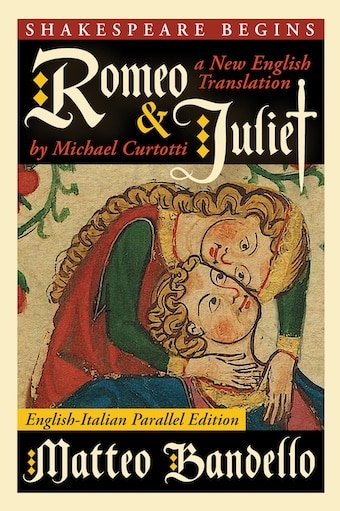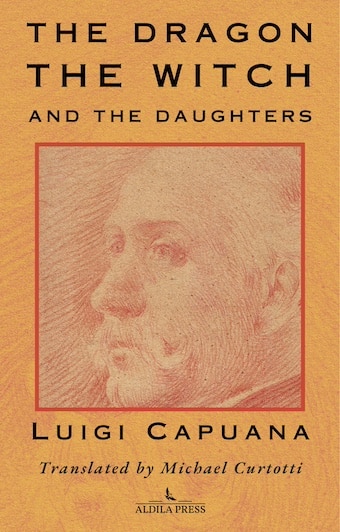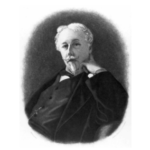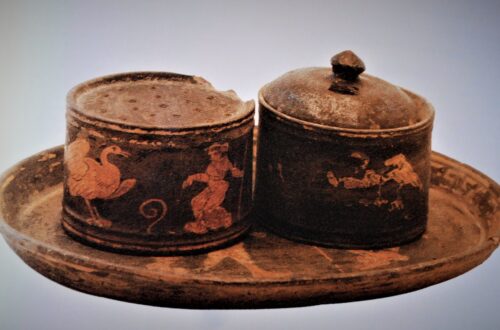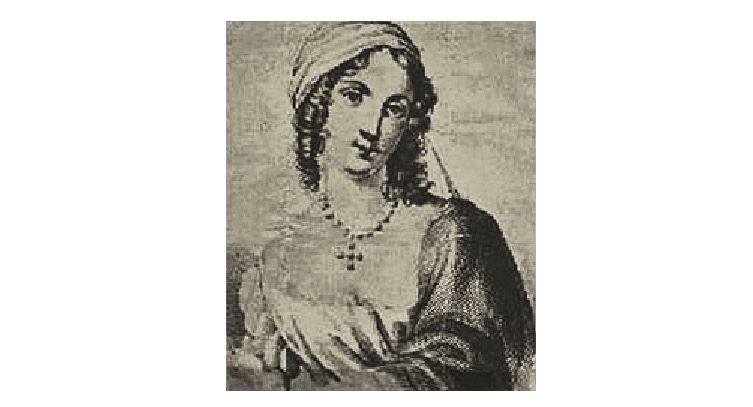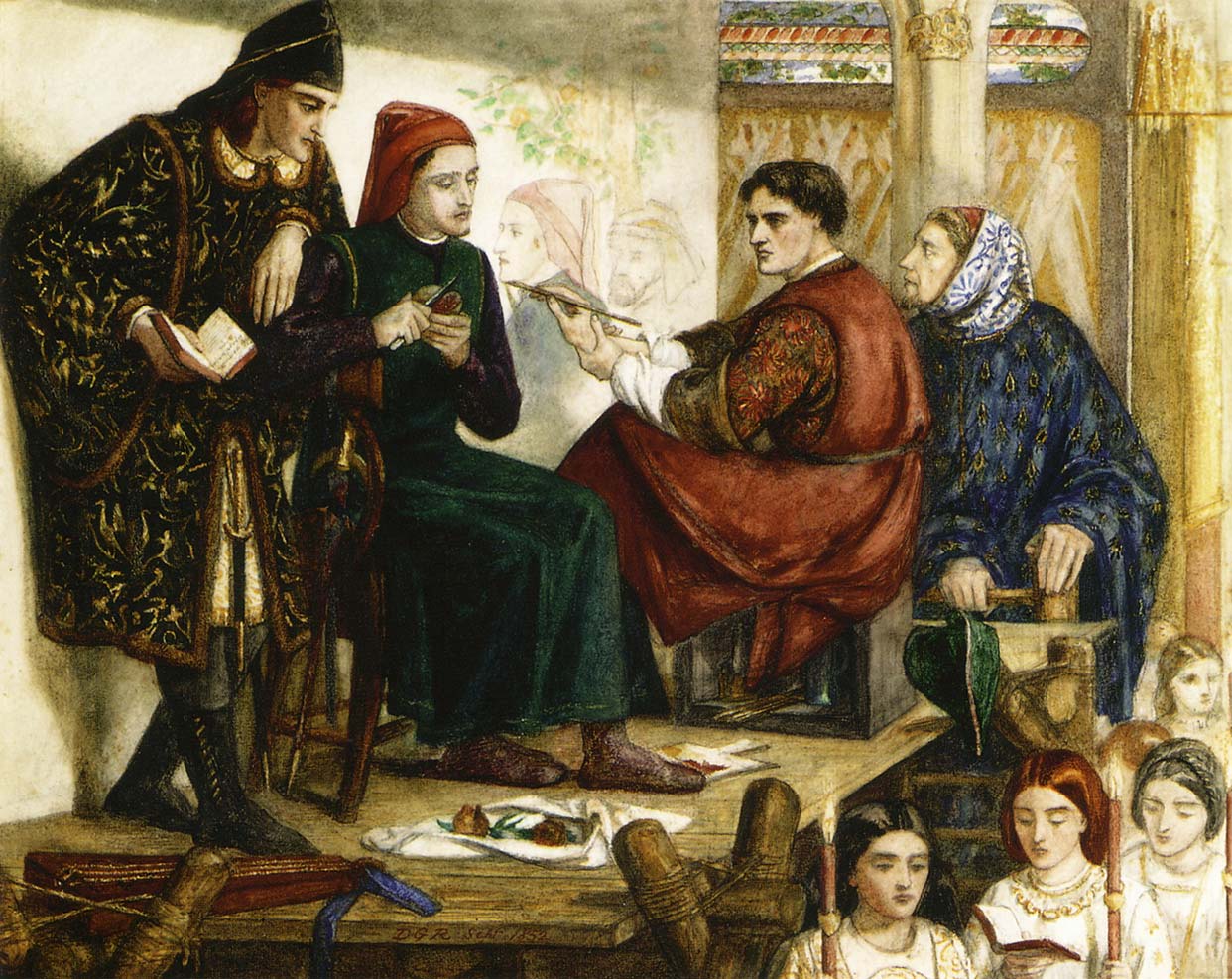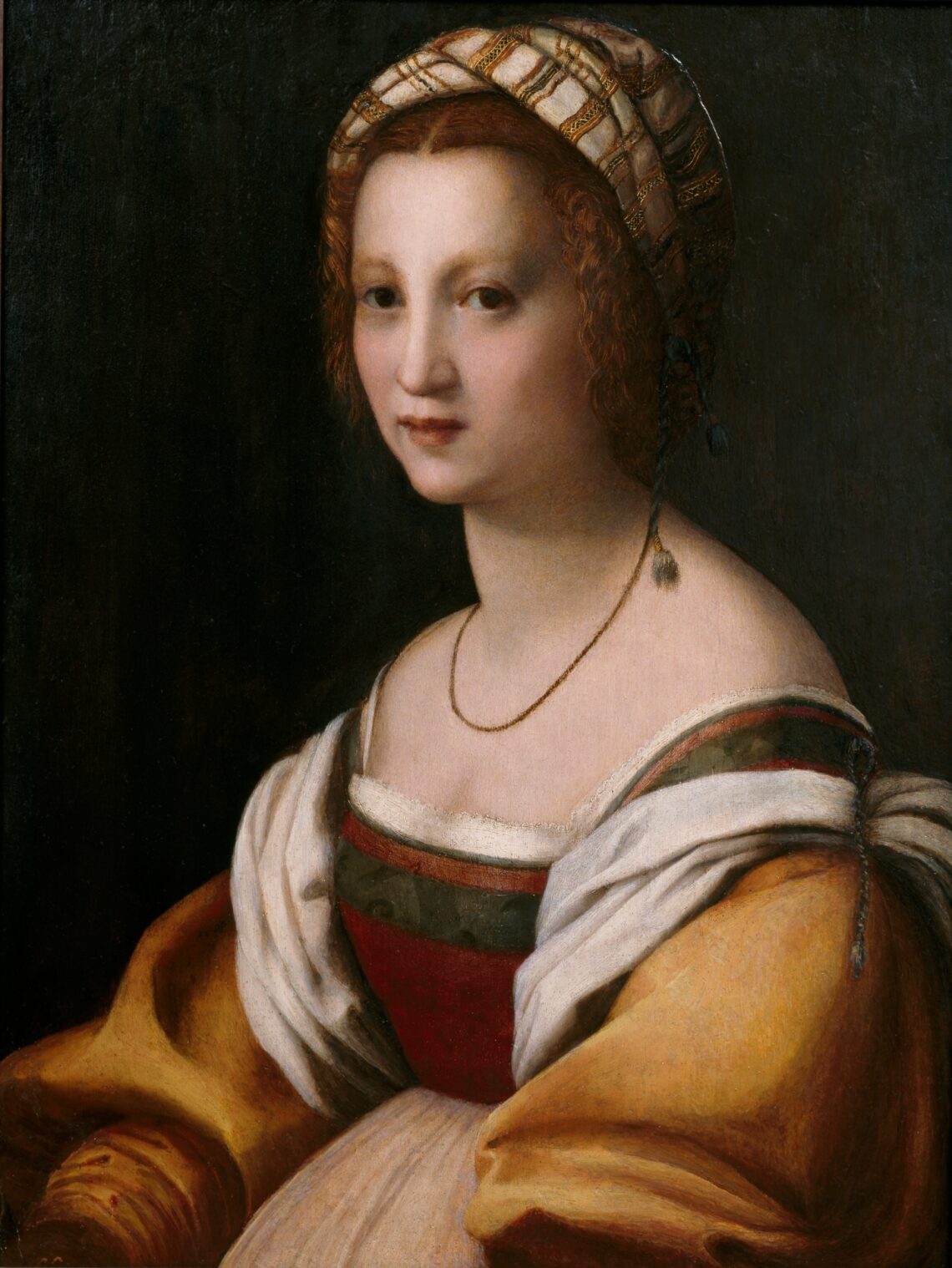
Giustina Rocca of Trani: The World’s First Woman Lawyer?
As we near the end of the nineteenth century, in country after country, we see women breaking through gender barriers. This was true in the law as much as in other fields. Giustina Rocca lived in the fifteenth century. Some say she is Italy’s, or indeed, the world’s, first woman lawyer. She was a native of the beautiful coastal city of Trani in Puglia. The city and local legal profession still celebrate her story. They are not the only ones to honour her. The European Court of Justice has named one of its three buildings the Rocca tower in her memory.
However the real story is always more involved than the myth. So who was this woman? She was a marvel to her fellow citizens and she did in fact appear in a legal trial in 1500 in Trani. Giustina has however a rival for the title of “first”. Lidia Poët has recently risen to international fame (see below) as Italy’s first woman to practice law and thus first lawyer, but is this the case?
Giustina Rocca’s Life and Times
The location could not be more evocative. Old Trani is still today a wonder of creamy white stone. In the Middle Ages pilgrims (or crusaders), would stop there as they made their way from northern Europe to Jerusalem. From Trani’s harbour ships would leave to sail to Palestine. The hospice established by the Knights Hospitaller to care for the pilgrims is there in Trani. Also there is the city’s Jewish synagogue. A small Jewish community today worships there. It would have been a synagogue in Giustina Rocca’s day too.
Undoubtedly the most iconic of Trani’s monuments was then, and remains today, its beautiful creamy cathedral by the sea. The cathedral rises between sea and land as a vision of medieval beauty. The old city of Trani is still a tourist drawcard.
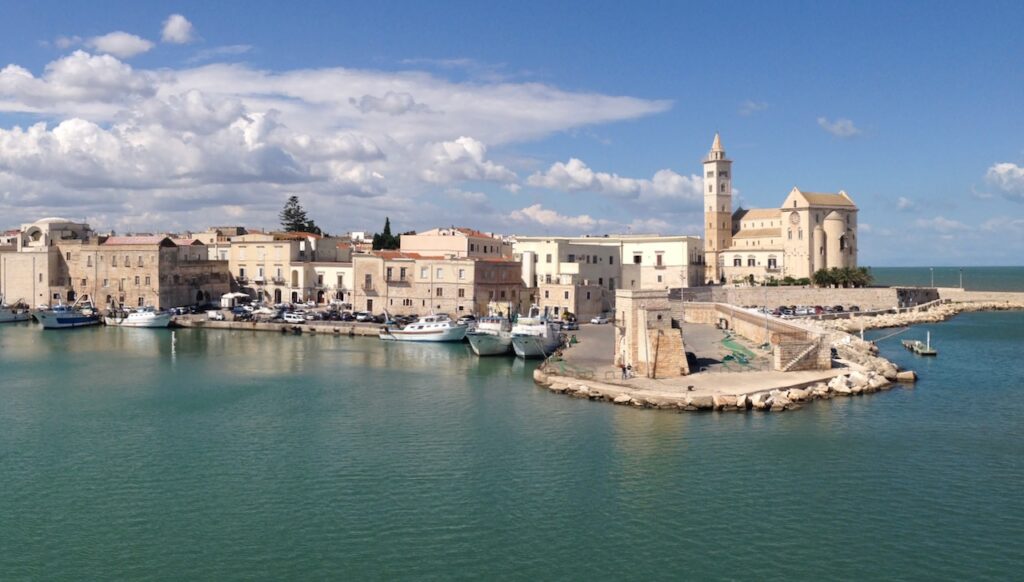
The era in which Giustina lived was just as evocative as her native city. The cultural revolution known as the “Renaissance” had been underway for at least a century. It was a period in which the role and rights of women in society were the topic of lively debate, with women themselves active participants in the debate. Women were achieving many ‘firsts’ in the period. Male historians later wrote their achievements out of history. So much so, that it prompted Joan Kelly to famously ask: Did women have a Renaissance?
We tended to see Renaissance women primarily through the male gaze of such Renaissance painters as Michelangelo and Raphael. Few are aware of the women (like the pioneer of still life painting, Fede Galizia), who were remarkable artists in their own right. In literature, we find figures such as the poet Laura Terracina, the most published Italian poet of her generation. We can fairly describe her writings as feminist.
There are many other examples from these centuries in a range of fields and professions. Indeed writers of the era, like Cinthio (Giovanni Battista Giraldi), were beginning to portray women as advocates. He created the character Epitia, who is a skilled and knowledgeable orator. She argues for the life of her brother and ultimately for justice for herself before the Emperor Maximilian. Epitia’s story became the inspiration for Shakespeare’s Measure for Measure. Other women were leading learned salons or entering the universities.
In fact in Giustina’s era, Trani was briefly part of the Republic of Venice. Only four years before the trial, Ferdinand II, the Aragonese king of the Kingdom of Naples, handed over the city to Venice. It was collateral for a massive loan he had taken to fund a war against a French invasion. The city was still part of the Venetian Republic on 8 April 1500 when Giustina Rocca appeared in front of the litigants and the people of the Trani.
Giustina’s father Oreste was “orator” of the Senate of the Kingdom of Naples. Her husband Giovanni Antonio Palagano served as a Captain Reggio. She thus came from leading families of the city. Indeed it was her relatives who gave her the opportunity to demonstrate her legal skills, as we shall see below.
She is known to have had a daughter, and her daughter’s tombstone is now in the lapidary museum of the diocese of Trani. The text (originally in Latin) is as follows:
Here lies noble Cornelia, who was renowned for her religious faith. She was the greatest adornment of her parents, the sole hope of her siblings, and light to her mother. She had not yet seen twenty years of life when impetuous death swiftly snatched her away. Therefore, she was mourned throughout the entire city. May she dwell among angels in the blessed realm. In the year of our Lord 1492, on the 27th of January.
Tombstone of Cornelia Palagano and Giustina Rocca
Although Giustina’s name is not there, we know that she was buried with Cornelia. Giustina’s will in 1501 specified that she was to be buried with her daughter. Cornelia herself died in 1502, only two years after the trial. The death of her daughter clearly marked Giustina deeply and perhaps reinforced her turn to legal scholarship.
Not long after Giustina’s death, Venice was to lose Trani, and it returned to the Kingdom of Naples. It was a circumstance that was to be a disaster for the city’s Jews. For a generation later, they were all expelled, as Spanish law was imposed in the Kingdom.
Giustina Rocca: Arbiter and Lawyer
Although recent sources retell her story many times, it was Cesare Lambertini who first to set it down in writing. From Trani himself, he was a probable eyewitness of the trial, and a relative of Giustina. He trained in law and he told the story in his multi-volume legal tome Tractatus de Iure Patronatus. It is a a legal work concerned with the law of benefices (church property that still rendered income to the donors).
In brief the story goes like this. Giustina Rocca’s cousins were in dispute in regard of their inheritance. She was asked to act as “arbiter” for the dispute. That is, she was to render a legal judgement as to how the inheritance was to be awarded. So on 8 April 1500 she appeared before the Venetian governor Ludovico Contarini and before the people of Trani. Not content with delivering the verdict, she insisted on payment for her services (as any male lawyer would have).
As always, context is everything, and Lambertini gives us his version of legal principles that enabled her to act as arbiter. He baldly asserts the right of women to act as “arbiters” (by custom) and as “arbitrators” (by operation of law).
Cesare cites two sources of authority for his opinioni. The Pope, in the first source, affirmed the right of Eleanor of Aquitaine to rule on a dispute between two orders of monks. The second was the legal opinion of Bartolo of Sassoferrato (an influential commentator on the Digest of Justinian). Both authorities, held that in general, women do not have a right to act give a legal judgement. They however exceptions to the general rule, for example where a woman is a ruler, and the rule is thus not as stated by Lambertini.
In an English-speaking context we can miss the distinction between “arbiter” and “arbitrator”. In continental law of the time an “arbiter” was someone who decided a legal dispute on the basis of application of law, and the decision is non-appellable. An arbitrator is simply someone who decides a dispute on the basis of fairness. The disappointed party can appeal their decision.
Francesco Mastroberti analyses the uniqueness of Giustina Rocca’s situation in light of the accepted legal opinions. She was not a ruler, nor the head of a religious order, nor did she have any authority to undertake the role she did. The people of Trani simply recognised her right to render judgement. Thus, Francesco comments:
Giustina was chosen arbiter not only for her influence in the city and her noble birth, but also, indeed if not primarily, for her legal knowledge. Giustina was an exceptional woman endowed with auctoritas, an authority that, as a practical matter, she was able to impose over the social conventions of her era, even bending the laws of the epoch.
Francesco Mastroberti, p 117
What about Lidia Poët? She lived centuries after Giustina Rocca
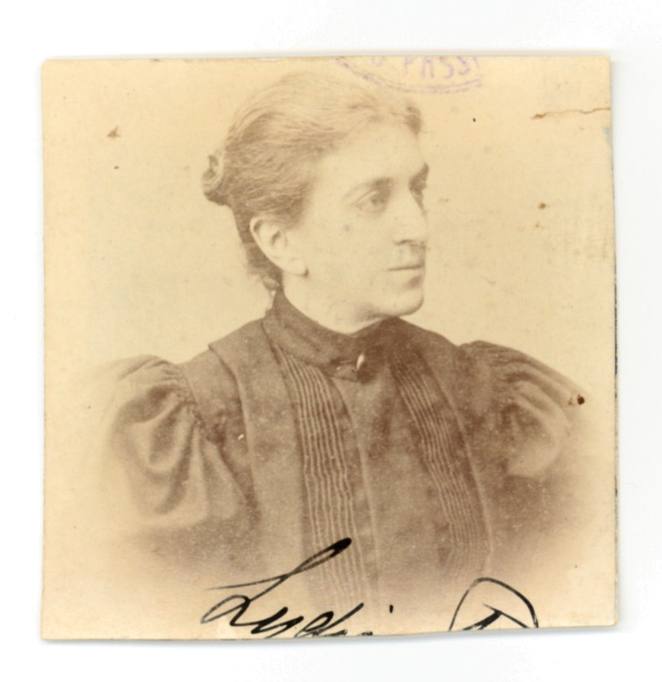
If you’re keeping up with popular culture you won’t have missed that Netflix has distributed a highly successful series called La Legge di Lidia Poët (The Law According to Lidia Poët). They bill it as “Inspired by a true story”. (Spoilers below).
As I’ve commented before, art can hold history in contempt, and although the series does celebrate her life and do Lidia Poët a service by making her known to millions, the series is only very loosely based on her life.
In fairness, poring over legal tomes and making legal arguments isn’t rivetting TV, and the first season of the series bookends the most important dimensions of her life with fictionalised adventures.
A council of her colleagues admitted the real Lidia as a lawyer in 1883. Only a month later the Attorney-General of Turin agitated to have her registration revoked. Lidia was unable to re-obtain her licence to practice law, despite appealing through the courts. Only in 1920 was she again recognised as a lawyer. Despite not being on the roll, Lidia continued to practice law. She worked in her brother’s law office and availed herself of the help of male colleagues when she needed to act for her clients in court.
The character the Netflix Series creates to represent Lidia is a transgressive part investigator, part lawyer in a “who-done-it” context. We should note that members of the real Lidia’s family (some of whom knew her) find the portrayal offensive and her biographer also commented that the series is mainly invention. However the fact that Lidia’s biographer now advertises that her book is the “true story” of Lidia Poët in contrast to the Netflix series, underlines that the series has made her name known. Searching for the “true story of Lidia Poët” brings up numerous recent articles on her life, obviously responding to the Netflix series.
When we think of “first woman lawyer”, Lidia’s story is much more familiar with how we understand legal practice today. This doesn’t mean that Giustina Rocca did not break ground and is not significant. Her work as a woman “arbiter” deployed all the forensic skills of the legal profession in a judicial context and was a cause celebre in her city and time. She was a lawyer in all but name.
So was Giustina Rocca or Lidia Poët, “first”?
Some have been minded to take up their sword for the cause of Giustina Rocca, as the true first woman lawyer. However, the President of the lawyer’s association of Trani, Francesco Logrieco, perhaps takes the best view. His observation might best be translated “it’s not a competition”. He continues that both Giustina and Lidia are important figures in the history of women’s entry into the professions. Giustina exercised the full scope of the functions of a legal professional, demonstrating her equality and professional acumen, in an era which found what she did extraordinary.
Yet, when Giustina appeared, the brilliant cultural ferment of the Renaissance was already moving out of Italy. Increasingly Italy became the colonised playground of the great powers of Europe and her cultural influence faded, although not entirely. The role of seventeenth and eighteenth century women of Italy as pioneers is still less known than it ought be. Through the frequent visits of the elites of Europe to Italy, the influence of such women continued to spread throughout the continent.
Europe as a whole too, after 1500, was to fall into the grip of religious warfare and division that made succeeding centuries a more intolerant and darker age. Innovating women were not welcome. In Catholic Europe the reformation of the church renewed its influence and control, while in Protestant Europe puritans would ban theatrical productions. We enter an era when witch burning (mainly of women), was to come to its height.
Giustina Rocca thus lived at the end of a high watermark in female advocacy and engagement. That high water mark was to recede in succeeding centuries. It did not begin to reappear until the beginning of the nineteenth century. It is right that Giustina Rocca be remembered, not only together with Lidia Poët, but also with the many women pioneers of her own era.
In April 2023 a crowdfunding campaign was launched with the support of the Mayor of Trani. They plan to host three days of events in Trani to celebrate the life and times of Giustina Rocca.
Selected Sources
Cesare Lambertini, Tractatus de Iure Patronatus Volume 1, Venice 1607, p 143
Francesco Mastroberti, Sul caso della Tranese Giustina Rocca e sulla donna arbiter
nella dottrina giuridica tra medioevo ed età moderna, in Riccardo Pagano and Francesco Mastroberti (eds.), La donna nel diritto, nella politica e nelle istituzioni, Quaderni del Dipartimento Ionico n. 1/2015, Università degli Studi di Bari Aldo Moro
Julie Stone Peters, Law as Performance, Theatricality, Spectatorship, and the Making of Law in Ancient, Medieval and Early Modern Europe, Oxford University Press 2022
Trani Diocesan Museum, lastra tombale di Cornelia Palagano e Giustina Rocca
Image
We do not know what Giustina Rocca looked like. The image is a painting of Andrea del Sarto of a woman c. 1514 and gives an idea of the fashions of the time. Noting her social standing, Giustina may well have been more ornately dressed.


